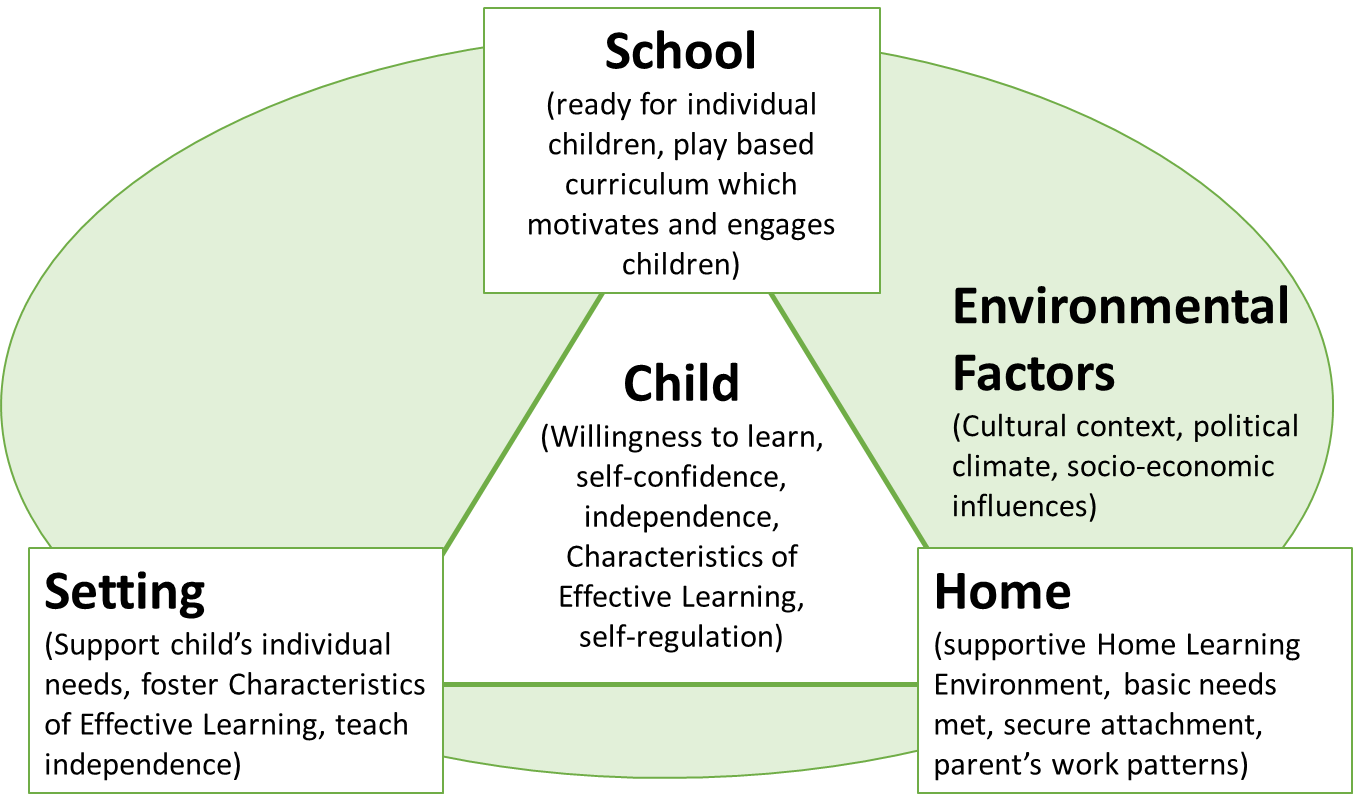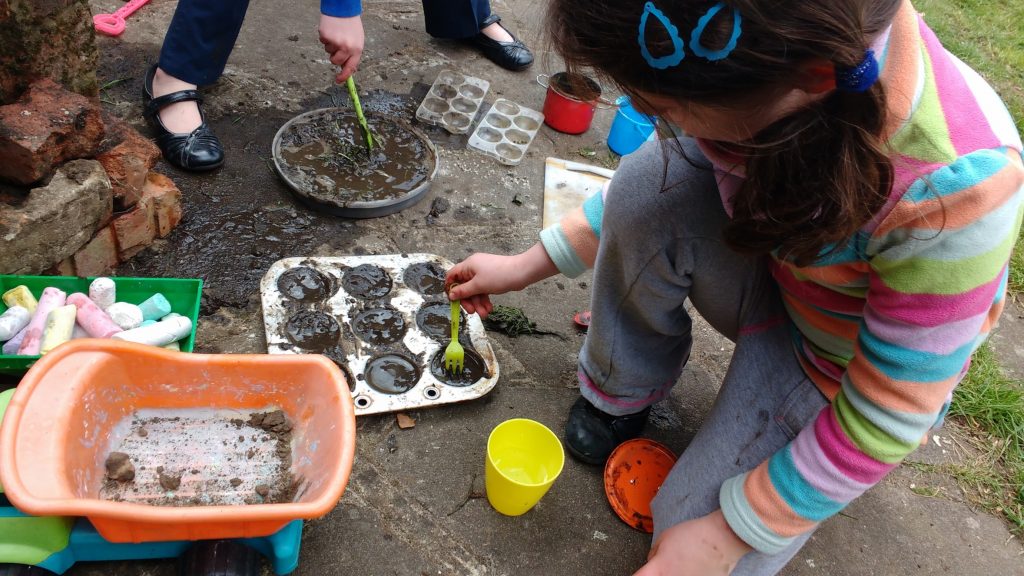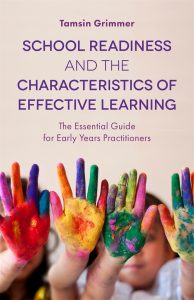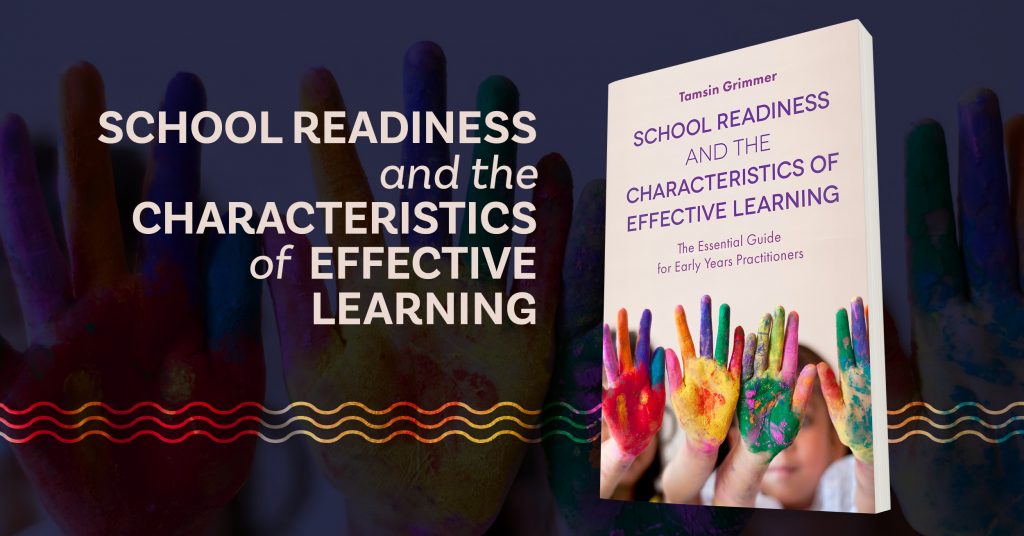When I put together a proposal for Jessica Kingsley Publishers about this book – I debated long and hard about the title! Using the contested term school readiness might put many people off reading the book, simply because that horrible phrase is used in the title. I’m not sure if I would have picked it up. However, it is this emotional response that spurred me on to write this book in the first place and also to use the term. I want to spark a debate and claim the phrase school readiness in an appropriate way for young children.
I explore the fact that there is no nationally recognised definition of school readiness and there is even confusion about the phase of education that it refers to. For many people, school readiness is about a child starting school for the first time, usually entering a Reception class, while for other people, school readiness is about moving out of the Early Years Foundation Stage and into Year One.
School readiness could also involve a number of different skills and abilities. A reception class teacher may feel that school readiness is about a child being able to go to the toilet independently or change for PE, while for a parent it could mean that their child is emotionally mature enough to separate from them for a whole day. Policy makers may assume that school readiness is about academic ability on entering school and a nursery practitioner might believe it to include social skills and self-regulation. Within this confusion, it is vital that early childhood educators consider how they define school readiness and own this phrase, because not having clarity could leave the door open for a top-down approach where we are told what it means, perhaps in terms that we do not agree with.
I believe that we should be looking at school readiness in a holistic way which is firmly centred around the child. As part of my research for this book, I worked with a group of teachers and early years practitioners and we developed the following model of school readiness. We placed the child at the centre and around them are three main areas of influence: school, setting and home. Each of these areas has key issues that relate to school readiness and support the child. Encompassing all of these areas are environmental factors which can affect the child in a broader context. This is, in our opinion, a comprehensive view of school readiness and is hopefully a helpful model for use when supporting children transitioning to school.
Triangle of factors surrounding the child: A model of school readiness
 The second chapter of my book looks at how starting school could be compared to a lottery, or a game of chance in terms of school readiness. It discusses issues such as age, country of birth, educational philosophies adopted in that country and gender, and how children can be advantaged or disadvantaged depending on these factors. I believe that children begin school at too young an age in the UK and many children are pushed into formal education too soon. I feel angry that those of us teaching these young children in early childhood feel pressurised to encourage very young children to sit still for long periods of time, often against our better judgement. Sue Palmer (2008) states, ‘There is in fact no evidence that an early start to formal education benefits children, and plenty suggesting that a structured child-centred approach breeds more confident, resilient, high-achieving children in the long run.’
The second chapter of my book looks at how starting school could be compared to a lottery, or a game of chance in terms of school readiness. It discusses issues such as age, country of birth, educational philosophies adopted in that country and gender, and how children can be advantaged or disadvantaged depending on these factors. I believe that children begin school at too young an age in the UK and many children are pushed into formal education too soon. I feel angry that those of us teaching these young children in early childhood feel pressurised to encourage very young children to sit still for long periods of time, often against our better judgement. Sue Palmer (2008) states, ‘There is in fact no evidence that an early start to formal education benefits children, and plenty suggesting that a structured child-centred approach breeds more confident, resilient, high-achieving children in the long run.’
My anger was fuelled by the most recent Ofsted report Bold Beginnings, which was a review of Reception Class practice and school readiness featured heavily within. It received a lot of criticism and continues to hit the headlines as organisations are publishing their own counter examples of effective Reception Class practice. I have been quite vocal about my objections to the report. It makes very frustrating reading as it does not reinforce the amazing effective practice and play-based pedagogy that many Reception teachers strive to embed. In fact, the report only looked at 0.2% of Primary schools so cannot be viewed as representative. I feel it totally devalues the EYFS and, yet again, only talks about the reception year as being a preparation for Year 1.
For me, school readiness is about developing the dispositions and attitudes that they need for school and life-long learning. So the Prime Areas and the characteristics of effective learning are good places to start. Bold Beginnings, although it refers to these in the main text, does not pick up on anything other than literacy and numeracy related findings and recommendations. It adds fuel to the dangerous schoolification agenda that is creeping in to early childhood and does nothing to support children in the way that babies and young children learn and develop. We know that the early years are a critical time, when their brains are being shaped and that children learn best through play and exploration in a multi-sensory way.
Although play was acknowledged as an ‘important part of the curriculum’, play was totally misunderstood and devalued within the report which claimed that ‘There is no clear curriculum in Reception’ and ‘except for literacy and mathematics, the schools were not clear about the time they devoted in a typical week to the different areas of learning.’ This clearly demonstrates a total misunderstanding of Reception as, and I quote, a ‘unique and important year’. When play is implemented successfully, different areas of learning and development will be accessed by the child. Take for example mud play.

These children are learning about solids and liquids, changing properties of materials, what happens when I add more water or more grass… It is involving thoughts; how shall I? Physical development; actions – stirring, scooping, spooning. Emotions; joy, pleasure, excitement. Their brains are making connections in understanding the world, about why things happen and how the world works. About maths and capacity; what if I pour this into that container? Will it fit? What will happen if it doesn’t? Connections with number; how many cake cases do I need? About language; sloppy, muddy, slimy, sploshy, squelch, squerch, squelch, squerch! Connections with other people; social interaction and cooperation which links with Personal, Social and Emotional Development (PSED). This was not during a ‘lesson’ which had aims and objectives relating to one specific area of learning, it was captured during free play, when the children could initiate their own learning, by accessing what was available to them in the environment through the continuous provision.
Is this Physical Development, Personal, Social and Emotional Development, Communication and Language, Understanding the World or Mathematical Development? Of course, it is all of them! We cannot always compartmentalise learning and shouldn’t need to! This is Playing and Exploring, Active Learning and Creating and Thinking Critically all at the same time. You can imagine the engagement and motivation that these children have! This is learning with a capital L… And this is what effective early childhood practice looks like.
The key findings and recommendations in Bold Beginnings totally reflect a more formal approach and the hugely inappropriate over-focus on literacy and maths. The summaries and recommendations do not summarise the report or make logical recommendations based on what the rest of the document says. It is clearly written to a different agenda and contradicts previous messages we have been given, including those from Ofsted. I hope that my book will help early childhood educators to stand firm against documents such as Bold Beginnings and ideas which contradict strategies for effective learning within those vital early years.
I have chosen to focus on the characteristics of effective learning throughout my book because, for me, they reflect the dispositions and attitudes that will offer children a firm foundation for life-long learning. Research has shown us the important influence that the early years has on a child’s future development and learning. Therefore, I feel very passionately that we in early childhood should stand up against opinions that are contrary to what we know if effective pedagogy – if we don’t stand up for our children – who will?
Therefore it is up to us, as early years experts and parents, to redefine school readiness for the sake of our children and their future. It is my hope that my book will play its part in changing policy and practice to make children’s lives better in the long term. So, in spite of my choice of title, I hope you enjoy reading it!
References
Ofsted (2017) Bold Beginnings: The Reception curriculum in a sample of good and outstanding primary schools. Retrieved from: https://www.gov.uk/government/publications/reception-curriculum-in-good-and-outstanding-primary-schools-bold-beginnings
Grimmer, T. (2018) School Readiness and the Characteristics of Effective Learning. London, UK: Jessica Kingsley Publishers.
Palmer, S. (2008) Detoxing Childhood: What Parents Need to Know to Raise Bright, Balanced Children. London: Orion, p.180.
If you would like to read more articles like this and get the latest news and offers on our early years books, why not join our mailing list? We can send information by email or post as you prefer. You may also be interested in liking our Special Ed, PSHE and Early Years Resources Facebook page.

